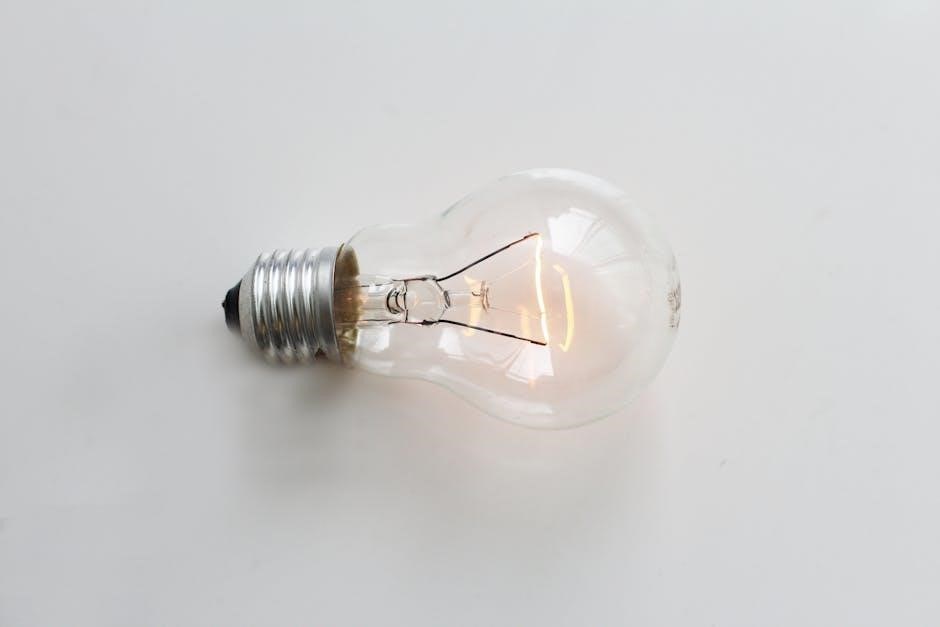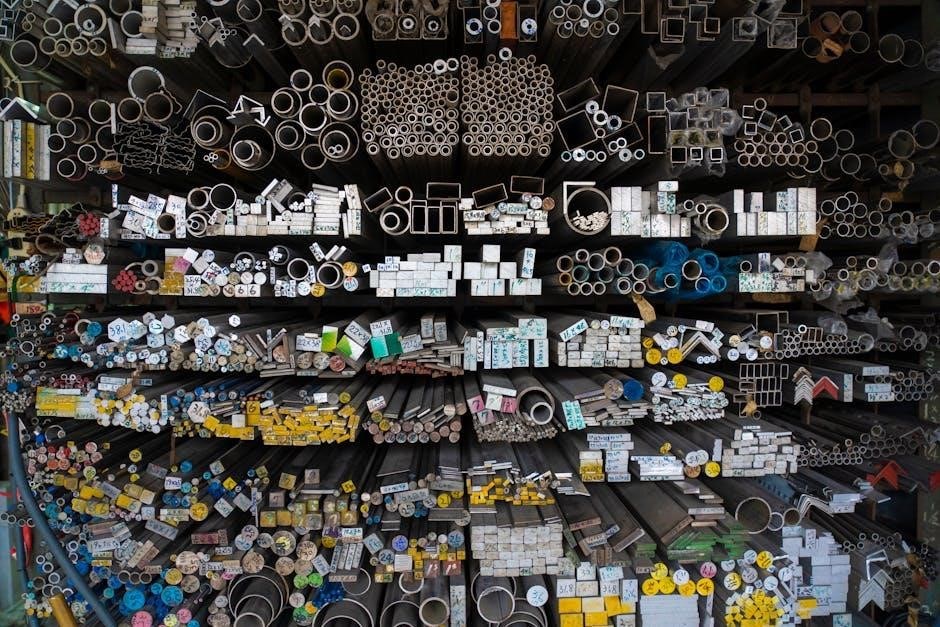Tungsten Guide Rods: A Comprehensive Guide
Welcome to a detailed exploration of tungsten guide rods, essential components in modern firearms.
We’ll uncover their benefits, drawbacks, material properties, installation, and compatibility, offering insights for informed firearm enthusiasts.
What is a Tungsten Guide Rod?
A tungsten guide rod is a firearm component, typically a replacement for the factory-standard guide rod, designed to enhance a pistol’s performance.
It serves a similar function to a normal recoil spring, but distinguishes itself through the use of tungsten, a material with a noticeably higher static weight.
Unlike traditional plastic or steel guide rods, tungsten offers increased density, contributing to the overall weight, especially at the front end of the gun.
This added weight is strategically positioned to influence the balance and recoil characteristics of the firearm.
The primary role of the guide rod is to guide the recoil spring during the cycling of the slide, ensuring smooth and reliable operation.
By utilizing tungsten, manufacturers aim to provide shooters with improved recoil management, enhanced accuracy, and reduced muzzle flip.
Benefits of Tungsten Guide Rods
Tungsten guide rods offer several potential advantages to firearm users, primarily related to recoil management and accuracy.
The increased weight, concentrated at the front of the pistol, helps to reduce muzzle flip during firing, allowing for faster follow-up shots.
This enhanced stability contributes to improved accuracy, as the firearm returns to the target more quickly and consistently.
Furthermore, some users report that tungsten guide rods can reduce felt recoil, making the shooting experience more comfortable.
The added weight may also enhance the overall balance of the pistol, improving handling and control.
Additionally, the use of a metal guide rod, compared to a plastic one, may contribute to smoother cycling of the firearm, promoting reliability.
The overall effect is a more stable and controllable firearm, leading to increased confidence and improved performance on the range or in practical shooting scenarios.
Reduced Recoil
One of the primary benefits attributed to tungsten guide rods is their ability to reduce felt recoil in firearms.
This reduction stems from the increased weight of the tungsten material compared to standard guide rod materials like plastic or stainless steel.
The heavier guide rod absorbs a greater portion of the recoil energy generated during firing, thereby minimizing the jolt felt by the shooter.
By diminishing the impact of recoil, shooters can maintain better control of the firearm and experience greater comfort during extended shooting sessions.
Reduced recoil also facilitates faster follow-up shots, as the firearm returns to the target more quickly and with less disruption.
This advantage is particularly valuable in competitive shooting scenarios or self-defense situations where rapid and accurate shots are crucial.
However, the degree of recoil reduction may vary depending on factors such as the firearm’s caliber, the shooter’s grip, and individual sensitivity to recoil.
Improved Accuracy

Enhanced accuracy is another significant benefit often associated with tungsten guide rods.
The added weight of the tungsten rod contributes to improved stability during firing, reducing muzzle flip and movement.
This enhanced stability allows shooters to maintain a more consistent sight picture, leading to better shot placement.
The reduced recoil also minimizes the shooter’s tendency to anticipate the shot, which can cause flinching and decreased accuracy.
Furthermore, the smoother cycling of the firearm, facilitated by the tungsten guide rod, helps to maintain a consistent trigger pull, further improving accuracy.
By minimizing extraneous movements and promoting a more controlled shooting experience, tungsten guide rods can assist shooters in achieving tighter groupings and more precise targeting.
This advantage is particularly valuable for competitive shooters, law enforcement personnel, and anyone who relies on accuracy in high-pressure situations.
However, it’s important to note that improved accuracy is also dependent on other factors, such as proper shooting technique, quality ammunition, and the overall condition of the firearm.
Enhanced Balance
Tungsten guide rods can significantly enhance the balance of a pistol, particularly in models that may feel nose-light from the factory.
The increased weight concentrated at the front of the firearm shifts the center of gravity forward, which can improve handling and reduce muzzle rise during recoil.
This enhanced balance allows for quicker follow-up shots and a more stable platform for aiming.
The added weight can also help to dampen vibrations and reduce the overall felt recoil, contributing to a more comfortable and controlled shooting experience.
For shooters who prefer a more balanced feel in their handguns, a tungsten guide rod can be a valuable upgrade.
It’s important to consider the specific characteristics of the firearm and the shooter’s personal preferences when determining whether a tungsten guide rod will provide the desired balance.
Some shooters may find the added weight to be beneficial, while others may prefer a lighter setup.
Ultimately, the impact of a tungsten guide rod on balance is subjective and depends on the individual shooter’s experience and preferences.
Reduced Stress on Components
While it might seem counterintuitive, a tungsten guide rod can potentially reduce stress on certain firearm components.
By absorbing a portion of the recoil energy, the guide rod can lessen the impact on the frame and slide during cycling.
This can be especially beneficial in high-volume shooting scenarios or with firearms chambered in more powerful calibers.
The added weight of the tungsten guide rod can also help to slow down the slide velocity, reducing the force with which it slams into the frame.
This can contribute to a longer lifespan for critical components, such as the slide stop and locking lugs.
However, it’s important to note that this benefit is not universally observed and may depend on the specific firearm and ammunition used.
In some cases, the increased weight could potentially accelerate wear on the recoil spring, which is a factor to consider.
Overall, the potential for reduced stress on components is a possible advantage of using a tungsten guide rod, but it should be evaluated in the context of the specific firearm and shooting habits.
Added Weight and Smoother Cycling

One of the most tangible effects of installing a tungsten guide rod is the added weight to the front of the firearm.
Tungsten’s high density allows it to pack a significant amount of mass into a relatively small space.
This extra weight can subtly alter the balance of the pistol, often shifting it forward.
Many shooters find this change in balance enhances handling characteristics, promoting a more stable and controlled feel, especially during rapid firing.
Furthermore, the added weight contributes to smoother cycling of the slide.
The increased inertia helps to dampen vibrations and reduce perceived recoil, leading to a more fluid and consistent shooting experience.
Some users report that this smoother cycling also translates to improved reliability, particularly with certain types of ammunition.
The combination of added weight and enhanced cycling can make a noticeable difference in the overall feel and performance of the firearm.
However, individual preferences vary, and some shooters may not find the change in balance or cycling to be beneficial.
Potential Drawbacks of Tungsten Guide Rods
While tungsten guide rods offer numerous advantages, it’s crucial to consider their potential drawbacks before making a purchase.
One significant factor is the increased cost compared to guide rods made from other materials like stainless steel or polymer.
Tungsten is more expensive to source and machine, leading to a higher price point for the end product.
Furthermore, tungsten can present machining challenges due to its hardness and density, potentially affecting the precision and quality of the final product.
Another concern is the potential for increased wear on the recoil spring.
The heavier tungsten guide rod can exert more force on the spring during cycling, potentially shortening its lifespan.
Finally, while tungsten is a strong material, it can be brittle under certain conditions.
Impact or stress may cause the tungsten guide rod to fracture, rendering it unusable.
These potential drawbacks should be carefully weighed against the benefits to determine if a tungsten guide rod is the right choice.
Cost

One of the most significant drawbacks associated with tungsten guide rods is their higher cost compared to alternatives.
Tungsten as a raw material is inherently more expensive than stainless steel or polymer, directly impacting the final price.
The complex machining processes required to shape tungsten further contribute to the elevated cost.
Manufacturers often need specialized equipment and expertise to work with this dense metal, adding to the production expenses.
This increased production cost is then passed on to the consumer, making tungsten guide rods a premium option in the market.
While the benefits of reduced recoil and improved accuracy may justify the price for some shooters, others may find the cost prohibitive.
Budget-conscious individuals might opt for stainless steel or polymer guide rods, which offer reasonable performance at a lower price point.
Ultimately, the decision to invest in a tungsten guide rod hinges on individual priorities and the willingness to pay for its unique advantages.
It’s essential to carefully weigh the cost against the perceived benefits before making a purchase.
Machining Challenges
Tungsten’s inherent hardness and density present significant machining challenges during the manufacturing process of guide rods.
Unlike more malleable materials such as steel or aluminum, tungsten requires specialized equipment and techniques to shape accurately.
The high melting point of tungsten necessitates the use of advanced cutting tools and cooling methods to prevent deformation or damage.
Achieving precise dimensions and smooth surface finishes on tungsten guide rods demands skilled machinists and stringent quality control measures.
Manufacturers must invest in specialized machinery, such as electrical discharge machining (EDM) or high-speed CNC milling, to effectively work with tungsten.
The complex geometries and tight tolerances required for guide rods further exacerbate the machining difficulties.
These challenges contribute to the increased production costs associated with tungsten guide rods, as more time and resources are needed for manufacturing.
Improper machining can lead to dimensional inaccuracies, surface imperfections, or even structural weaknesses in the guide rod.
Therefore, only experienced manufacturers with the necessary expertise and equipment can produce high-quality tungsten guide rods.
The machining challenges associated with tungsten are a critical factor to consider when evaluating the overall value and reliability of these components.

Increased Wear on the Recoil Spring
One potential drawback of using a tungsten guide rod is the increased wear it can inflict on the recoil spring.
Due to tungsten’s higher density and weight compared to stock guide rods, the recoil spring experiences greater stress during cycling.
The heavier guide rod impacts the spring with more force, leading to accelerated fatigue and potential premature failure.
This increased wear is especially noticeable in high-volume shooting or with firearms chambered in more powerful calibers.
Over time, the recoil spring may lose its tension and effectiveness, resulting in malfunctions and reduced performance.
To mitigate this issue, it’s recommended to use a higher-quality recoil spring designed to withstand the added stress.
Regular inspection and replacement of the recoil spring are crucial when using a tungsten guide rod to maintain optimal function.
Consider reducing the firearm’s round count or switching to a lighter spring if excessive wear becomes apparent.
The increased wear on the recoil spring is a trade-off to consider when weighing the benefits of a tungsten guide rod.
While the added weight can improve recoil management, it’s essential to address the potential for accelerated spring degradation.
Balancing the advantages and disadvantages will ensure the firearm’s long-term reliability and performance.
Brittleness Concerns
A significant concern associated with tungsten guide rods is their inherent brittleness.
While tungsten boasts exceptional density and weight, it is also prone to fracturing or cracking under stress, particularly impact.
The repeated slamming of the slide against the guide rod during the firing cycle can create stress points, leading to potential failure.
This brittleness can be exacerbated by imperfections in the manufacturing process or improper heat treatment.
If a tungsten guide rod fractures, it can cause malfunctions or even damage other components of the firearm.
It’s crucial to select high-quality tungsten guide rods from reputable manufacturers to minimize the risk of failure.
Avoid using guide rods that exhibit any signs of cracks or imperfections.
Some users have reported instances of tungsten guide rods breaking after only a few hundred rounds.
The brittleness of tungsten is a trade-off to consider when seeking the benefits of added weight and reduced recoil.
While the added mass can improve shooting performance, it’s essential to be aware of the potential for catastrophic failure.
Regular inspection of the guide rod is crucial to detect any signs of damage before they lead to significant problems.
Consider a different material, such as stainless steel, if brittleness is a primary concern.
Material Properties of Tungsten

Tungsten is favored in guide rod construction because of its distinctive material properties.
Its most notable attribute is its high density, surpassing that of steel.
This density allows tungsten guide rods to add substantial weight to a firearm without significantly increasing their size.
This is a key factor in reducing recoil and improving stability.
Tungsten also has a high melting point, making it resistant to deformation under the heat generated during rapid firing.
However, tungsten is known to be brittle, a property that can be a disadvantage in high-stress applications.
It’s also relatively hard, contributing to its wear resistance but also making it more challenging to machine.
The material’s high density contributes to its ability to dampen vibrations, which aids in improving accuracy.
While tungsten is not as corrosion-resistant as stainless steel, it can be treated with coatings to enhance its durability.
Its stiffness contributes to smoother cycling and reduced flex during operation.
The material’s unique combination of density, hardness, and brittleness makes it a specialized choice for guide rods.
Understanding these properties is essential for evaluating the advantages and disadvantages of using tungsten in a firearm.
These characteristics collectively define tungsten’s suitability in enhancing firearm performance.

High Density
Tungsten’s high density is arguably its most significant property when used in guide rods, primarily because it contributes to reduced recoil and enhanced firearm stability.
Density refers to the mass per unit volume of a material, and tungsten boasts a density significantly greater than that of steel or aluminum.
This characteristic allows a tungsten guide rod to add substantial weight to the front end of a pistol without noticeably increasing its physical dimensions.
The added weight helps to dampen muzzle flip during firing, thereby reducing perceived recoil.
The higher density also contributes to a more balanced feel in the firearm, which can lead to improved accuracy and control, especially during rapid fire.
Furthermore, the concentrated mass helps absorb some of the energy generated by the cycling action, potentially reducing stress on other components.
The high density also influences the vibrational characteristics of the firearm, which can affect the shooter’s ability to maintain a steady aim.
While the added weight might not be suitable for all shooters, those seeking to minimize recoil and enhance stability often find the high density of tungsten guide rods to be a valuable asset.
This intrinsic property is what sets tungsten apart from other materials commonly used in guide rod construction.
Installation and Compatibility

Installing a tungsten guide rod is typically a straightforward process, often mirroring the installation of a standard guide rod, but ensuring compatibility is crucial.
Most aftermarket tungsten guide rods are designed as drop-in replacements for factory guide rods, meaning they should fit without requiring permanent modifications.
However, it is important to verify the specific model and generation of your firearm before purchasing a tungsten guide rod to ensure proper fitment.
Some manufacturers offer different guide rods for various generations or models of the same firearm.
Care should be taken during installation to avoid damaging the guide rod or other components of the firearm.
Ensure the recoil spring is properly seated on the guide rod and that the assembly is correctly positioned within the slide.
In some cases, minor adjustments may be necessary to achieve optimal performance, particularly if you are using aftermarket recoil springs.
Consulting with a gunsmith is advisable if you are unsure about any aspect of the installation process.
Proper installation and compatibility are vital for ensuring the reliable function of your firearm with a tungsten guide rod.
Failure to ensure compatibility may result in malfunctions or damage to the firearm.
Comparison to Other Guide Rod Materials
Tungsten guide rods stand apart from other materials due to their unique properties.
Compared to stainless steel, tungsten offers significantly higher density, translating to increased weight and potentially greater recoil reduction.
However, stainless steel is generally more affordable and easier to machine, making it a popular alternative.
Plastic guide rods, often found in factory firearms, are lightweight and cost-effective but lack the durability and recoil-dampening benefits of tungsten.
The added weight of a tungsten guide rod can enhance balance and reduce muzzle flip, improving accuracy for some shooters.
Stainless steel offers a good balance of durability and cost, while plastic is the least expensive but may wear out faster.
Ultimately, the choice of guide rod material depends on individual priorities, such as budget, desired recoil reduction, and durability.
Tungsten is the premium option for those seeking maximum weight and recoil control, while stainless steel provides a solid and reliable alternative, and plastic serves as a budget-friendly option for factory setups.
Each material has its advantages and disadvantages, so carefully consider your needs before making a decision.
Stainless Steel vs. Tungsten
When choosing between stainless steel and tungsten guide rods, several factors come into play.
Tungsten boasts a significantly higher density than stainless steel, leading to increased weight, which can aid in recoil reduction and improved muzzle control.
However, this density also makes tungsten more expensive and challenging to machine, resulting in a higher price point.
Stainless steel, on the other hand, offers a balance of durability, corrosion resistance, and affordability.
It’s easier to manufacture and typically less prone to brittleness compared to tungsten.
For shooters prioritizing recoil reduction and enhanced stability, tungsten may be the preferred choice.
Those seeking a cost-effective and reliable option may find stainless steel more suitable.
The longevity and resistance to wear are also crucial considerations, as both materials exhibit good durability under normal usage conditions.
Ultimately, the decision hinges on individual needs, budget constraints, and the desired performance characteristics of the firearm.
Tungsten provides a premium upgrade for recoil management, while stainless steel offers a practical and dependable alternative for most shooting applications.
Consider the trade-offs carefully to make the best choice for your firearm.
Plastic vs. Tungsten
The debate between plastic and tungsten guide rods highlights a stark contrast in performance and durability.
Plastic guide rods, commonly found in factory firearms, offer lightweight construction and cost-effectiveness.
However, their flexibility and lower density provide minimal recoil reduction and can contribute to increased muzzle flip.
Tungsten guide rods, conversely, leverage their high density to significantly dampen recoil and enhance stability, improving accuracy and control.
While plastic rods are inexpensive and easy to replace, they lack the rigidity and durability of tungsten, making them prone to wear and potential failure under heavy use.
Tungsten rods, though pricier, offer a substantial upgrade in performance and longevity, justifying the investment for serious shooters.
The added weight of tungsten can also improve balance, especially in lighter firearms, further enhancing handling.
Plastic rods may suffice for casual shooting, but tungsten is the clear choice for competitive applications or those seeking optimal performance.
Consider the trade-offs: plastic offers affordability and minimal weight, while tungsten provides superior recoil reduction, durability, and overall shooting experience.
The ideal choice depends on your shooting needs and budget, but for enhanced performance, tungsten guide rods represent a worthwhile upgrade over plastic alternatives.
Common Misconceptions about Tungsten Guide Rods

Several misconceptions surround tungsten guide rods, often exaggerating their benefits or misrepresenting their drawbacks.
One common myth is that they eliminate recoil entirely; in reality, they reduce it, but other factors like grip and stance play a significant role.
Another misconception is that they universally improve accuracy; while they can enhance stability and reduce muzzle flip, they won’t magically fix poor shooting technique.
Some believe tungsten rods are indestructible, but they can break under extreme stress or due to manufacturing defects, although it’s rare.
It’s also falsely assumed that they increase wear on all firearm components; while they might slightly accelerate recoil spring wear, proper maintenance mitigates this.
Another misconception is that they are compatible with all firearms; compatibility varies by model, requiring careful selection.
Some shooters think they are only for competition; they benefit anyone seeking improved recoil management and stability, not just competitive shooters.
There’s also a belief that they are a “drop-in” upgrade; some fitting may be required for optimal performance.
Many assume they drastically increase firearm weight, but the added weight is generally manageable.
Finally, some think they are solely a recoil-reducing device; they also enhance balance and smooth cycling.
Understanding these misconceptions allows for a more realistic assessment of their benefits and limitations.
User Experiences with Tungsten Guide Rods
Applications of Tungsten Guide Rods
Tungsten guide rods find applications across diverse shooting disciplines, enhancing firearm performance in specific scenarios.
In competitive shooting, particularly in action pistol sports like IPSC and USPSA, they aid in faster follow-up shots by reducing muzzle flip and improving recoil control.
Law enforcement and military personnel often utilize them to enhance weapon stability, improving accuracy in high-stress situations.
For recreational shooters, they offer a more comfortable shooting experience by mitigating recoil, especially in high-caliber pistols.
Hunters can benefit from improved accuracy and stability, ensuring ethical and precise shots in the field.
Self-defense scenarios also warrant their use, as reduced recoil and enhanced control can be crucial in critical situations.
They’re commonly used in 1911 and Glock pistols, where the added weight can significantly improve balance and handling.
Custom gun builders frequently incorporate them into their designs for enhanced performance and aesthetics.
Shooting enthusiasts seeking to upgrade their firearms often turn to tungsten guide rods for their recoil-reducing and accuracy-enhancing properties.
They are also suitable for firearms used in training courses, helping shooters develop better recoil management skills.
Firearms chambered in high-recoil cartridges benefit the most, as the added weight helps tame muzzle rise.
Overall, their versatility makes them a popular choice among shooters seeking improved firearm performance and control.


Leave a Reply
You must be logged in to post a comment.